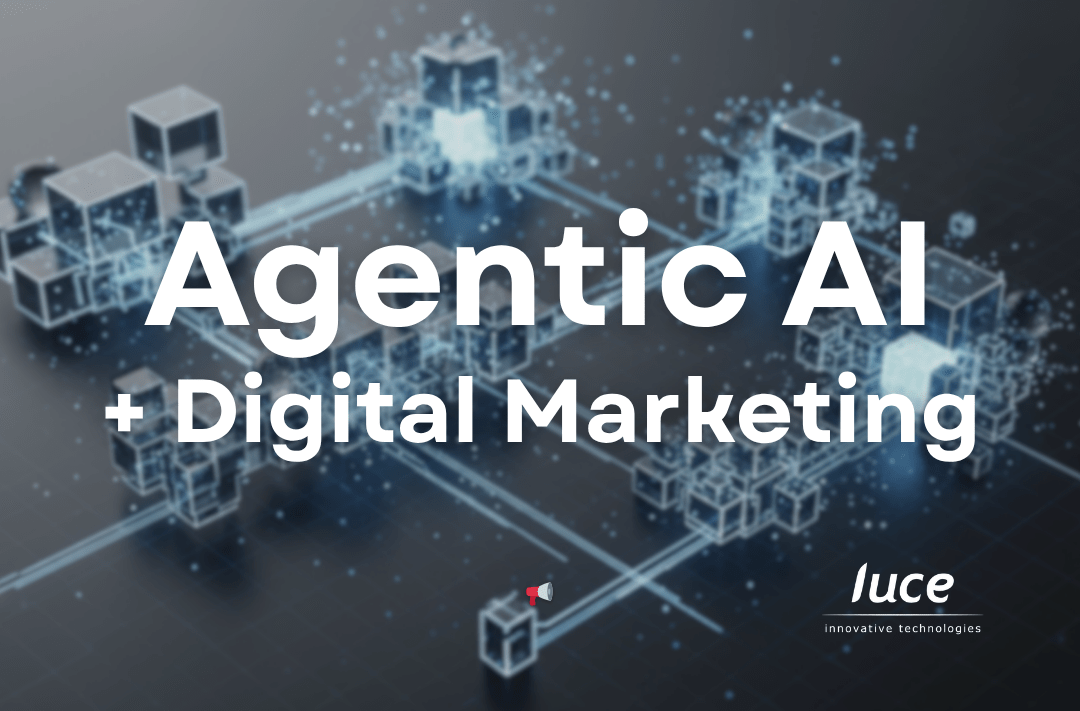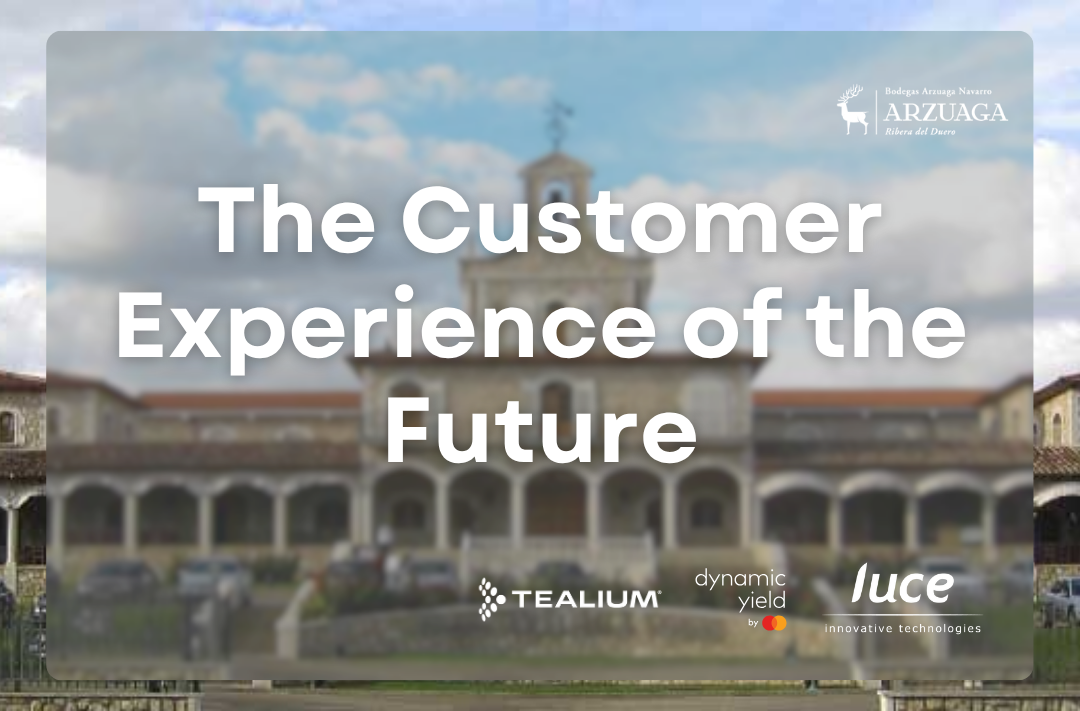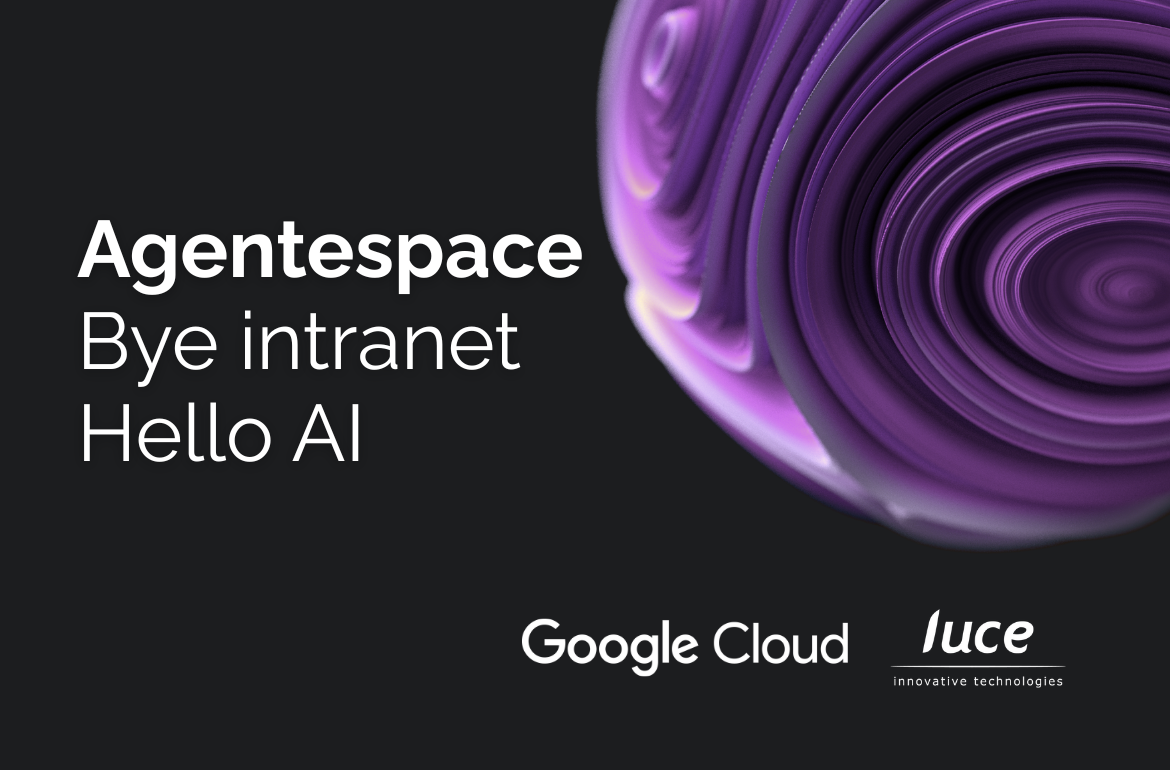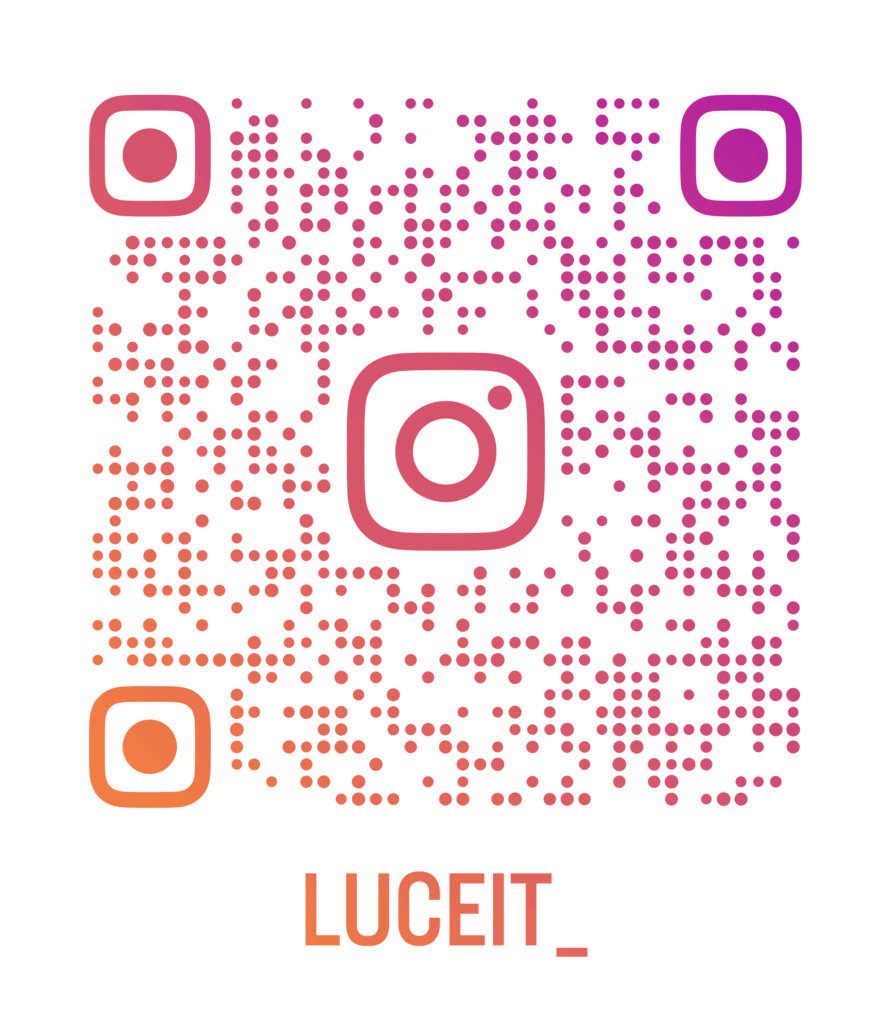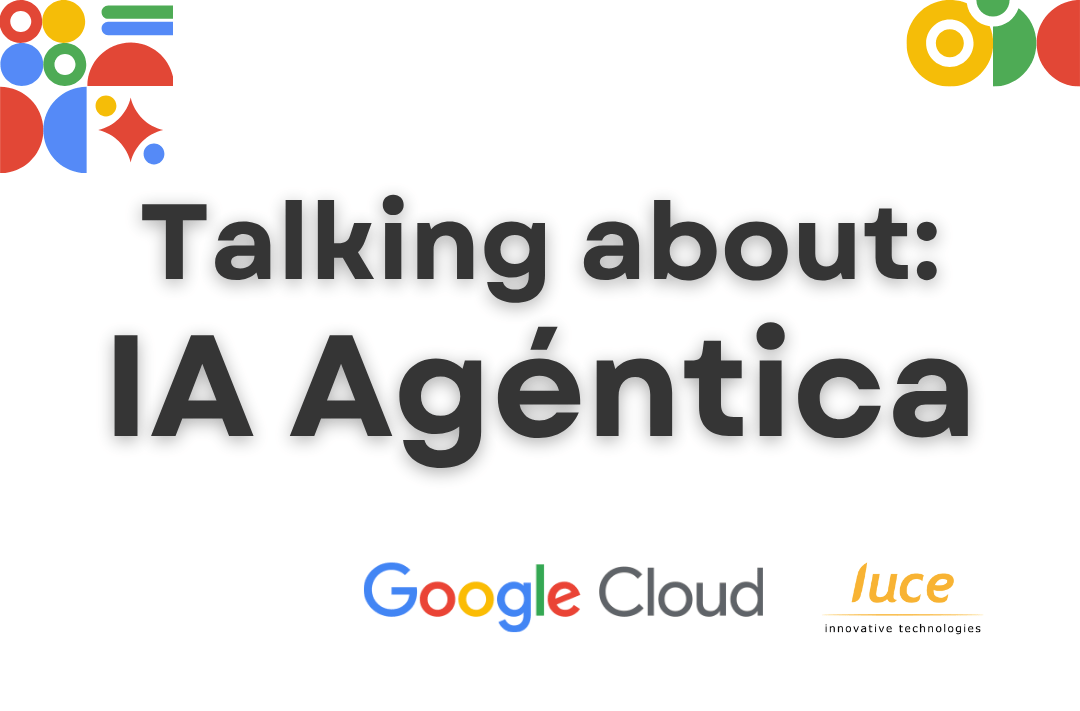
Talking about Agent-based AI: MCP, ADK, and A2A for next-generation apps.
Recently, we had the pleasure of sharing a webinar with our Google Cloud partners, exploring a topic that is revolutionizing the way we conceive and build applications: Agentic AI. If you missed it or want to dive deeper, you’re in the right place! We’re going to break down the key concepts shaping the next generation of intelligent applications: AI Agents, and the protocols and tools that make them possible, such as A2A, MCP, and ADK.
What is an AI Agent?
First, let’s clarify what an “agent” is in the context of Artificial Intelligence. It’s not just a script, nor just a Large Language Model (LLM) like Gemini, nor an isolated API.
An AI agent is a system designed with a clear mission and a set of skills (tools) to fulfill it. Its main characteristics are:
- Autonomy: Operates without direct human intervention.
- Perception: “Understands” its context or environment.
- Reasoning: Uses its “brain” (usually an LLM) to plan and decide.
- Action: Interacts with other systems or agents to execute tasks.
In essence, it combines an LLM (reasoning), Tools (APIs, DBs, etc.), and a defined Objective.
The Challenges of Agentic Growth
The idea of creating agents is powerful, but problems arise when they grow uncontrollably or are developed in isolation within an organization:
- Unmaintainable Monolithic Agents: An agent that tries to cover too many functions (customer history, purchases, inventory, support…) becomes complex, fragile, and difficult to scale or maintain. A failure in one part can affect the entire system.
- Silos and Chaos: If each team creates its own agents without coordination, it leads to duplicated efforts, inconsistencies, security risks, and a fragmented user experience. Automating complex processes that require collaboration between these silos becomes a titanic task.
To solve this, we need specific standards and tools.
A2A: What is Agent-to-Agent?
Imagine an ecosystem where agents, instead of being isolated generalists, are specialists who collaborate. This is what the Agent-to-Agent (A2A) protocol facilitates.
A2A is an open standard that allows agents to:
- Discover each other: Know what other agents exist and what they can do (via an “Agent Card”).
- Negotiate: Agree on how to communicate.
- Manage Tasks: Coordinate the status of shared tasks.
- Collaborate: Ask for help, information, or delegate sub-tasks.
This makes it possible to create an “Agent Mesh”, where a main agent orchestrates other specialized agents for complex tasks, such as planning a complete trip. Communication is based on structured messages (JSON-RPC) over HTTP(S), managing the task lifecycle and even allowing for real-time updates (streaming).
MCP: What is the Model Context Protocol?
While A2A manages communication between agents, the Model Context Protocol (MCP) focuses on how agents interact in a standard way with their tools and resources (APIs, databases, files).
Currently, there is no single standard for defining and exposing tools to LLMs. MCP proposes an open protocol for applications to “publish” their tools and context so that any compatible agent can discover and use them without specific adaptations. This avoids redundancy and facilitates reuse.
A2A and MCP are complementary: A2A for agent-agent collaboration, MCP for agent-tool interaction.
ADK: What is the Agent Development Kit?
Besides protocols, we need development tools. The Agent Development Kit (ADK) from Google Cloud is an open-source and code-first toolkit for creating, evaluating, and deploying AI agents. Its advantages:
- Flexibility (Code-First): Precise control over logic.
- Developer-Centric: Facilitates rapid iteration.
- Open and Interoperable: Model- and deployment-agnostic.
- Enterprise-Ready: Designed for scalable multi-agent systems.
ADK allows defining different types of agents and facilitates the integration of diverse tools, including custom ones, pre-built Google tools (Search, RAG, etc.), or third-party ones (LangChain, CrewAI). ADK agents are managed and scaled in production using Vertex AI Agent Engine.
An Example of an Agentic Ecosystem in Action
For an e-commerce case, for example, an optimal agentic ecosystem would work as follows:
-
- With A2A, we would divide it into specialist agents (tracking, purchasing, catalog, support) that collaborate.
- With MCP, the tools (CRM, ERP, payments, DBs) would be exposed in a standard and reusable way.
e
- With ADK and Agent Engine, we would build and manage these agents in a scalable way.
Google Cloud is driving this ecosystem with Gemini Enterprise and Vertex AI Agent Builder, platforms that facilitate the creation and use of agents for both business users and developers.
The Future is Collaborative and Intelligent
Agentic AI, supported by open protocols like A2A and MCP, and tools like ADK, allows us to overcome the limitations of monolithic approaches. It opens the door to new-generation applications: modular, scalable, resilient, and capable of automating increasingly complex processes.
At Luce IT, as Google Cloud partners, we are immersed in this new paradigm, ready to help our clients build the future of their applications.
Building next-generation agentic applications requires both advanced artificial intelligence and a robust architecture. It is essential to have a partner to navigate this new paradigm and get the most out of these solutions. Any questions, you can always ask us.
FAQ
What is Agentic AI?
Agentic AI refers to artificial intelligence systems (agents) designed with a specific objective and a set of skills (tools) that can operate autonomously, perceiving their environment, reasoning, and acting to fulfill their mission. They go beyond simple chatbots or automations.
What is the main difference between A2A and MCP?
A2A (Agent-to-Agent) is a protocol for different AI agents to collaborate with each other, delegating tasks or sharing information. MCP (Model Context Protocol) is a standard for agents to interact with their tools (APIs, databases, etc.) in a unified way. A2A is agent-to-agent, MCP is agent-to-tool.
What is Google’s Agent Development Kit (ADK)?
ADK is an open-source toolkit provided by Google Cloud for developers to build, test, and deploy AI agents more efficiently and in a structured way, offering flexibility and control over the agent’s logic.
What benefits do AI agents bring to businesses?
They allow for the automation of complex processes, improve customer experience by offering more natural and efficient interactions, reduce development times (Time-To-Market), and adapt better to changing business needs thanks to their modularity and scalability.
How to take advantage of AI agents?
AI agents allow companies to automate complex processes that previously required human intervention. By combining reasoning (LLM) with specific tools (APIs, DBs), they can perform tasks like answering queries, managing procedures, or analyzing data autonomously. This improves efficiency, reduces costs, frees up employees for higher-value tasks, and can improve the customer experience by offering faster, more personalized responses and actions.
How to create future-proof applications?
Agentic AI, especially with protocols like A2A, promotes a modular approach. Instead of building a monolithic application that does everything, specialized agents are created (one for payments, another for the catalog, etc.) that collaborate. This makes the application more flexible and scalable. If you need to add a new function or change an existing one, you can modify or add a specific agent without redoing the entire system. Tools like ADK facilitate this modular development.
Is it possible to connect different AI agents to each other? How does it work?
Yes, it is possible and is achieved through the A2A (Agent-to-Agent) protocol. A2A is an open standard that defines how different agents can discover each other, negotiate how to communicate, collaborate by asking for help or delegating tasks, and manage the state of those shared tasks. This allows for the creation of an “agent mesh” where several specialists work together to resolve a complex request.
What do I need to start building a system with connected AI agents?
You need a clear strategy (what problem you want to solve), to define the specialized agents you need, the tools (APIs, DBs) they will use, and to choose the right technology. Protocols like A2A (for agent-to-agent connection) and MCP (for connection to tools), along with development kits like ADK and platforms like Google Cloud’s Vertex AI Agent Engine, provide the technical framework to build and manage these systems robustly and scalably.
Luce IT, your trusted technology innovation company
The Luce story is one of challenge and non-conformity, always solving value challenges using technology and data to accelerate digital transformation in society through our clients.
We have a unique way of doing consulting and projects within a collegial environment creating “Flow” between learning, innovation and proactive project execution.
At Luce we will be the best by offering multidisciplinary technological knowledge, through our chapters , generating value in each iteration with our clients, delivering quality and offering capacity and scalability so they can grow with us.
>> The voice of our customers – Rated 9 in 2024
>> Master Plan 2025: Winning the game
